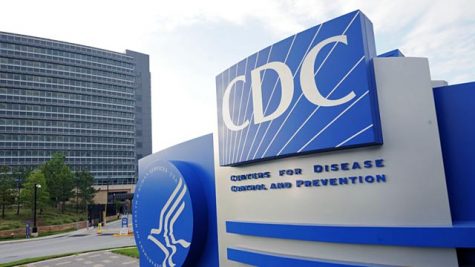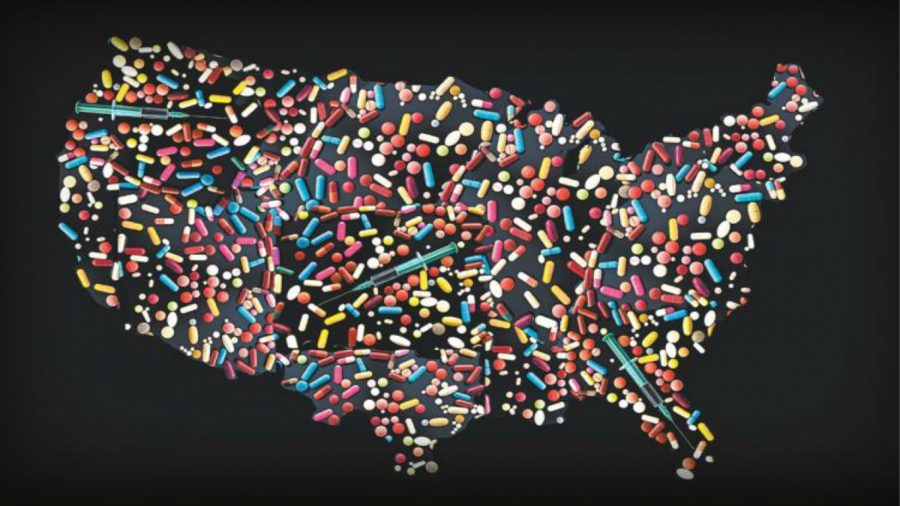The Opioid Crisis: How did we get here and where are we now?
Back in the 1990s, competition became more intense among pharmaceutical companies to get their drugs sold. In order to sell their product, these companies would tell doctors that opioid painkillers were not addictive and were safe to prescribe to patients. It may have taken around twenty years for the problem to hit the surface on a grand scale, but it certainly hit in a big way. In 2017 we lost 47,000 Americans to opioid overdoses. That’s 130 people every day. These overdoses are coming not only from the opioids present on the streets in dangerous drugs like heroin and fentanyl but also from the prescription pads of trusted doctors across the country.
Steve Diaz, an emergency medicine doctor from Maine, had this to say referring to the beginning of the problem, “The patient says, ‘I’m in pain, and you’re not meeting my needs.’ And doctors might say, ‘I’m being graded on this. I’ll give this patient something, to get them over the hump,’” he said. “No one will overtly say, ‘I’m doing this to not get a bad score. But in the back of their mind…”
Diaz mentions how doctors are heavily influenced in their practice by their “score” meaning they feel pressured to do what the patient wants in order to have them leaving the appointment pleased. This contributes to the opioid crisis because as patients feel the need to get rid of their pain quickly they look to opioid painkillers and expect doctors to prescribe them for faster recovery. With the doctors feeling the pressure of both the pharmaceutical company and patient at once, he/she likely will always choose to over-medicate his or her patients as it not only pleases both of the other sides but also puts more money in his or her pocket.
Fast forward to the present day and you see that same patient who went to his/her doctor for painkillers after having back surgery years ago is now looking for new ways to get those same drugs in his/her hand again. This is the opioid crisis today. As of this year, it was reported by the Center for Disease Control and Prevention (CDC) that the total economic burden of this epidemic was $78.5 billion. This number will only continue to grow as it was found that as recent opioid overdose rates rose, so did depression, anxiety, and other mental health issues.

This year the CDC reported that the economic burden of the opioid crisis is at $78.5 billion dollars.
Back in May of 2016, the Los Angeles Times put together an investigation regarding how the opioid crisis had begun to hit the surface. Reporters spoke with Theodore Cicero, a neuropharmacologist at the Washington University School of Medicine in St. Louis, to address why people were increasingly likely to become addicted to these drugs.
“Patients in whom the drug doesn’t last 12 hours can suffer both a return of their underlying pain and the beginning stages of acute withdrawal,” Cicero said. “That becomes a very powerful motivator for people to take more drugs.”
Cicero conveys the idea that the opioid crisis came not from dangerous street drugs such as heroin and fentanyl, but rather from doctors offices in which people who weren’t satisfied with their dosage went back and wanted more. With the growing pressures doctors faced from both patients and the pharmaceutical companies that Diaz mentioned above, this process was occurring all over the country and spiraled out of control as the demand for these painkillers continued to increase.
A study published in the Journal of the American Board of Family Medicine found that 19 percent of individuals who suffer from a diagnosed mental illness have an opioid prescription–a shocking increase compared to only 5 percent of the general population. This discrepancy has yet to be conclusively explained, as opioids are prescribed for physical ailments.
The Department of Health and Human Services (HHS) launched a five-step plan in 2017 to begin to combat the growing problem of people losing their lives to the opioid crisis. The five steps included are access, data, pain, overdoses, and research (ADPOR). These points are receiving the majority of funding to continue to provide support for those in need. However, as the initiative is yet to have a real effect on the general population, the goal is to have more people become informed on the issue as it progresses. The Secretary of the HHS, Alex Azar, described the organizations’ five-step plan.
“Addressing the opioid crisis is a priority for this administration,” Azar said. “The U.S. Department of Health and Human Services (HHS) is leading the public health-based approach to understanding the problem and taking action to fight it. The HHS is tackling this crisis through our comprehensive five-point strategy focused on improving access to prevention, treatment, and recovery services: promoting the use of overdose-reversing drugs, strengthening our understanding of the epidemic through better public health surveillance, providing support for cutting-edge research on pain and addiction and advancing better practices for pain management.”
The plan the HHS is putting forward has the potential to become a great solution as it hits at multiple different aspects of the opioid crisis. However, for this plan to work it will take more funding and public attention from the US government and its citizens. The HHS has stated that it was “issued over $800 million in grants to support access to opioid-related treatment, prevention, and recovery” in addition to increasing states access to fee waivers for opioid treatment through Medicaid.
Now, it is in the hands of the citizens of this country to continue to spread the word about what the HHS is doing for those who are struggling with addiction to opioids, whether it is prescribed or illicit.

Senator Lamar Alexander (R- TN) says the Senate’s bill is a great first step in combating the opioid crisis.
Last September, the Senate passed a bill it praised for being bipartisan and considered a breakthrough in addressing the opioid crisis. Yet experts are more reluctant about this, worried that while the bill is a good first step, it is not enough to truly fight the overdosing problem in our country.
Lamar Alexander (R-TN), who has served since 2003, said the bill, “represents the work of over 70 senators, five committees, and countless staff who have worked together to help put an end to the opioid epidemic ravaging virtually every American community.”
It’s important to know that while it may take time to find the answer to this issue, our policymakers are coming together to try and do what is best for this country rather than what will get them re-elected. Alexander and many of his colleagues acknowledge the Opioid Epidemic is one of the most critical and important issues facing the country. However, his praise of the September Senate bill doesn’t ensure that it is exactly what this country needs to combat the opioid crisis.
One drug policy expert, Keith Humphreys from Stanford University, worried that while “there are many ‘small sanities’ in the Senate and House opioid bills that will make a positive difference, this reflects a fundamental disagreement between the parties over whether the government should appropriate the large sums a massive response would require. Lacking that, Congress did the next best thing — which is to find agreement on as many second-tier issues as they could.”
Ultimately, it will take the combined efforts of the HHS, our government and everyday Americans to prevent this issue from becoming too big to fix. If we can continue to spread the word about these great programs to those who are in dire need of help, then an end to this being such a big problem in our country seems in reach.

Joey Leonardo is a senior at York and is the sports editor of This Is York. Outside of school, he enjoys partaking in basketball, golf, and playing video...






